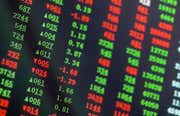A commodity is a basic good used in commerce that's interchangeable with other commodities of the same type. While the quality of a given commodity may differ slightly, it's essentially uniform across producers. One troy ounce of gold, for example, is basically the same product – regardless of the producer.
Commodities play an important role in our daily lives, and many items we use every day are produced using some type of commodity, whether it’s the cotton in the clothes we wear, the metals in our electronics or the foods on our plates.
Globally, the commodities markets are massive and trade in the trillions of dollars every day. There’s a lot of diversity in the commodities markets and investors can trade in four broad categories:
|
Category |
Examples |
|
Agriculture (or “Ag”) |
Cocoa, coffee, corn, cotton, orange juice, soybeans, sugar, wheat |
|
Livestock |
Feeder cattle, live cattle |
|
Metals |
Copper, gold, platinum, silver |
|
Energy |
Crude oil, gasoline, heating oil, natural gas |
There are numerous ways to invest in commodities, including exchange-traded funds (ETFs), mutual funds, options and hedge funds. Investors can also gain exposure by investing in mining and other commodity-related companies through stocks.
The most popular way to invest in commodities, however, is through a futures contract – an agreement to buy or sell the underlying commodity at a specified future date and price. Each futures contract represents a specific amount of a given commodity. The most widely traded commodity future contract, for example, is crude oil, which has a contract unit of 1,000 barrels. Each futures contract of corn, on the other hand, represents 5,000 bushels – or about 127 metric tons of corn.
It’s important to note that futures contracts have specific expiration dates, and if you don’t exit your position before that date, you’ll either have to deliver the physical commodity (if you’re in a short position) or take delivery (if you’re long). It’s estimated that only 2% of all futures contracts are actually delivered. That’s because most traders don’t want to store, insure and deliver such huge quantities of commodities. If you do end up with a long position after expiration, you may be able to “retender” the delivery by establishing a short position on the business day following assignment and paying a retender fee – which might run several hundred dollars, plus a set fee (e.g., $30) per contract. Still, the vast majority of traders exit their positions before expiration.
A contract month is the month in which a futures contract expires. While some commodities trade every month of the year, others trade during certain months only. Each month is represented by a single letter, as shown here:
|
Month |
Code |
|
Month |
Code |
|
January |
F |
July |
N |
|
|
February |
G |
August |
Q |
|
|
March |
H |
September |
U |
|
|
April |
J |
October |
V |
|
|
May |
K |
November |
X |
|
|
June |
M |
December |
Z |
To avoid confusion, a contract name always includes the commodity’s ticker symbol, followed by the contract month and the two-digit year. The complete contract name for the July 2017 Crude Oil contract, for example, would be “CLN17”:
|
Ticker Symbol |
Contract Month |
Year |
|
CL |
N |
2017 |
|
CLN17 |
||
In this tutorial, we’ll introduce 20 commodity futures contracts – the most popular way to invest in commodities – along with contract specifications, production information and price drivers for each. Please note that all trading hours are shown in Eastern Time.
Commodities: Cocoa
-
 Investing
InvestingAll About Liquid Commodities
You might hear 'liquid commodities' and think of an auction, but they're actually a high-volume, fast paced financial product suitable for day traders. -
 Investing
InvestingDBC: PowerShares DB Commodity Tracking ETF
Find out about the PowerShares DB Commodity Tracking ETF, and explore a detailed analysis of the fund that tracks 14 distinct commodities using futures contracts. -
 Investing
InvestingInvesting In Commodities Without the Hassle: Try Commodity ETFs
Exchange-traded funds (ETFs) that invest in commodities offer a convenient, low cost way to access the commodities markets. -
 Investing
InvestingCommodities Without Worries
ETFs have made commodities investing easier, but look before leaping. -
 Investing
Investing3 Reasons to Invest in Discounted Commodities
Though they're selling at depressed prices, there are several reasons that it could make sense to invest in commodities now. -
 Investing
InvestingWhy Investing in Commodities Can Be Tricky
While some exposure to commodities can enhance a portfolio, it is key to understand the investment vehicle you've chosen, or you could be in for a rude awakening. -
 Investing
InvestingAnalyzing The 5 Most Liquid Commodity Futures (WTI, ZC)
Crude oil leads the pack as the most liquid commodity futures market, followed by corn and natural gas. -
 Investing
InvestingHedge Funds Pray for High Commodities Prices in 2017
The commodities rally in 2016 was strong, giving hedge funders hope for 2017. -
 Investing
Investing3 ETFs That Suggest Commodities Are Headed Lower (COMT, DBC)
Nearby trendlines and resistance from major moving averages suggest that the broad commodities market is headed lower from here.



